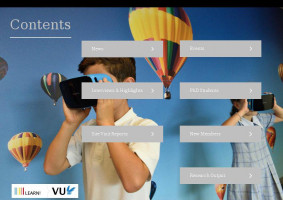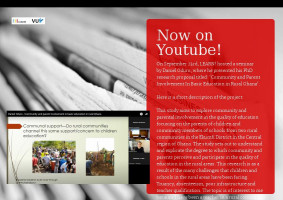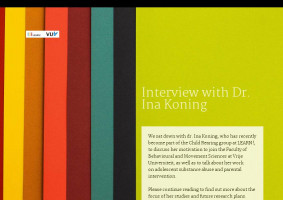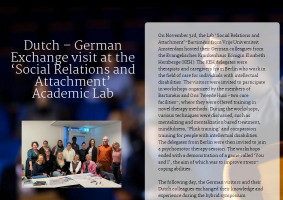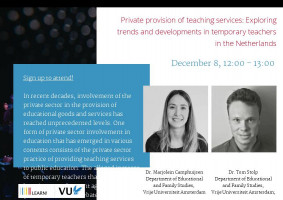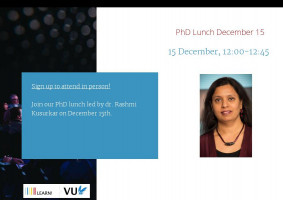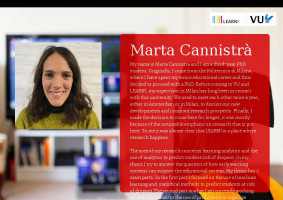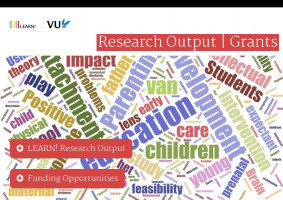Marta Cannistrà
My name is Marta Cannistrà and I am a third-year PhD student. Originally, I come from the Politecnico di Milano, where I have spent my entire educational career and thus decided to proceed with a PhD. Before coming to VU and LEARN!, my supervisor in MIlan has long been in contact with this university. We used to meet each other twice a year, either in Amsterdam or in Milan, to discuss our new developments and common research prospects. FInally, I made the decision to come here for longer; it was mostly because of the noticeable emphasis on research that is put here. To me it was always clear that LEARN! is a place where research happens.
The area of my research concerns learning analytics and the use of analytics to predict student risk of dropout. In my thesis I try to answer the question of how early warning systems can support the educational system. My thesis has 2 main parts. In the first part I focused on the use of machine learning and statistical methods to predict students at risk of dropout.The second part is what I am currently working on and it is related to the use of predictions to organize specific interventions for students who are predicted to be at risk of dropout. I am now trying to evaluate an intervention method which is based on nudging communication. This type of communication is characterized by a very low touch tone and is used to convince the students with a high drop-out risk to enroll for tutoring activities.
The future steps in my work involve replicating this two-step approach in a digital learning environment. I already started with analyzing data from an online lifelong- learning platform at Politecnico di Milano. Similarly to what I did before, I want to predict the students’ risk of leaving the platform. At this stage I already have some interesting findings- I managed to identify some clusters based on user-engagement with such platforms, which can later be translated into methods of effective interventions. I believe that studying such a platform has great potential. Firstly, by examining the students’ behavior on such platforms, we know exactly when a student enters and leaves the platform, which can be tracked by inspecting their login data. The second advantage is that we can measure and then model the engagement level of those students, which is something more difficult to examine in regular on-campus education.
_w520_h520_1.jpg)

